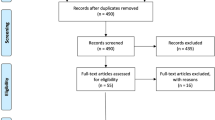Abstract
The learning curve as a concept has been considered, discussed and debated in medical education and healthcare for over two decades. The precise usage has been recognised in surgical disciplines both broad specialties and sub-specialties. Rollin Daniel in his book stated that, rhinoplasty is the most difficult of all cosmetic operations for three reasons, (a) nasal anatomy is highly variable, (b) the procedure must correct form and function and (c) the final result must meet the patients expectations. With this in mind a study was carried on the perception of learning curve in rhinoplasty based on a surgeon questionnaire at Marien Hospital, Stuttgart, Germany under Prof. Gubisch. Aims of the study were, (1) to extract the perception of learning curve of Rhinoplasty from surgeons across a spectrum of experience, i.e. less experienced to experienced, (2) To calculate the perception of learning curve in rhinoplasty as for other surgical procedures i.e. minimum number, interquartile range, surgical time, accelerators, (3) To chart-out a road-map for a novice rhinoplasty surgeon for continued improvement in surgical skills and ability. The conclusion derived was the concept of learning curve in rhinoplasty cannot be applied to the operation of Septo-Rhinoplasty as a whole because the two factors i.e. interquartile range and minimum number to achieve proficiency have a wide range and cannot be generalized. It is thought that each type of Rhinoplasty should be dealt with separately and learning curve calculated accordingly, i.e. hump reduction, crooked nose and augmentation rhinoplasty.


Similar content being viewed by others
References
Cook JA, Ramsay CR, Fayers P (2004) Statistical analysis of learning curve effects in surgical trials. Clin Trials 1(5):421–427
Ramsay CR, Grant AM, Wallace SA et al (2000) Assessment of the learning curve in health technologies. A systematic review. Int J Technol Assess Health Care 16(4):1095–1108
Bridgewater B, Grayson AD, Au J et al (2004) Improving mortality of coronary surgery over first four years of independent practice: retrospective examination of prospectively collected data from 15 surgeons. BMJ 329(7463):421
Dincler S, Koller MT, Steurer J et al (2003) Multidimensional analysis of learning curves in laparoscopic sigmoid resection: eight year results. Dis Colon Rectum 46:1371–1378 (discussion 89.8)
Hassan A, Pozzi M, Hamilton L (2000) New surgical procedures: can we minimise the learning curve? BMJ (Clin Res ed) 20:171–173
Sutton DN, Wayman J, Griffin SM (1998) Learning curve for oesophageal cancer surgery. Br J Surg 85:1399–1402
Westerman SJ, Davies DR (2000) Acquisition and application of new technology skills: the influence of age. Occup Med (Oxford) 50:478–482
Westerman SJ, Davies DR, Glendon AI et al (1998) Ageing and word processing competence: compensation or compilation? Br J Psychol 89:579–597
Bingener Casey J, Richards ML, Strodel WE et al (2002) Reasons for conversion from laparoscopic to open cholecystectomy: a 10 year review. J Gastrointest Surg 6:800–805
Hopper AN, Jamison MH, Lewis WG (2007) Learning curves in surgical practice. Postgrad Med J 83(986):777–779. doi:10.1136/pgmj.2007.057190
Cook JA, Ramsay CR, Fayers P (2007) Using the literature to quantify the learning curve: a case study. Int J Technol Assess Health Care 23:255–260
Subramonian K, Muir G (2004) The ‘learning curve’ in surgery: what is it, how do we measure it and can we influence it? BJU Int 93:1173–1174
Choi DH, Jeong WK, Lim SW et al (2009) Learning curves for laparoscopic sigmoidectomy used to manage curable sigmoid colon cancer:single-institute, three-surgeon experience. Surg Endosc 23:622–628
Kye BH, Kim JG, Cho HM, Kim HJ, Suh YJ, Chun CS (2011) Learning curves in laparoscopic right-sided colon cancer surgery: a comparison of first-generation colorectal surgeon to advance laparoscopically trained surgeon. J Laparoendosc Adv Surg Tech A 21:789–796
Kang JC, Jao SW, Chung MH, Feng CC, Chang YJ (2007) The learning curve for hand-assisted laparoscopic colectomy: a single surgeon’s experience. Surg Endosc 21:234–237
Filicori F, Keutgen XM, Fahey TJ III, Zarnegar R (2011) A novel approach for single incision laparoscopic cholecystectomy. In: Sages annual meeting. http://www.sages2011.org/a-novel-approach-forsingle-incision-laparoscopic-cholecystectomy/. Accessed Apr 2013
Zhonghua Er Bin Yan,Hou Tou Jing,Wai Ke, Za Zhi (2014) Investigation of learning curve for cochlear implantation. In Fang Quin Pub facts 49(8):649–53
Stuart JS, Erail G, Woon K et al (2010) Light at end of the tunnel. The learning curve associated with endoscopic trans sphenoidal skull base surgery. Skull Base 20(2):69–74
Liu CY, Yu EC, Lin SH et al (2009) Learning curve of septomeatoplasty. Auris Nasus Larynx 36(6):661–664
Luers JC, Damm M, Klussmann JP et al (2010) The learning curve of sialendoscopy with modular sial endoscopes. A single surgeon”s experience. Arch Otolaryngol Head Neck Surg 136(8):762–765
Lohius PJFM (2014) Pg6, chapter 1 advanced caucasian and mediterranean rhinoplasty. Kugler Publications, Amsterdam
Danilel R (2010) Mastering rhinoplasty. Springer. ISBN 978-3-642-01401-7 eISBN 978-3-642-01402-4. Doi: 10.1007/978-3-642-01402
Acknowledgements
Prof. Wolfgang Gubisch, Marien Hospital, Stuttgart, Germany for encouragement and guidance. Director, Dr A. V. Bhore, Dean, Dr Bangal and Prof. Dr K. J. Shinde, SKNMC & GH for permission and support.
Author information
Authors and Affiliations
Corresponding author
Ethics declarations
Conflict of interest
Author A declares that he/she has no conflict of interest. Author B declares that he/she has no conflict of interest.
Ethical Approval
This article does not contain any studies with human participants or animals performed by any of the authors.
Informed Consent
Informed consent was obtained from all individual participants included in the study.
Rights and permissions
About this article
Cite this article
Yeolekar, A., Qadri, H. The Learning Curve in Surgical Practice and Its Applicability to Rhinoplasty. Indian J Otolaryngol Head Neck Surg 70, 38–42 (2018). https://doi.org/10.1007/s12070-017-1199-x
Received:
Accepted:
Published:
Issue Date:
DOI: https://doi.org/10.1007/s12070-017-1199-x




